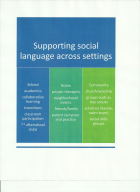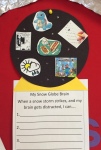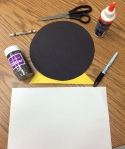
In IEP meetings, I am finding that many parents have the misconception that there is plenty of time during the day for their children to meet new friends and establish social relationships incidentally. While school is a social learning lab, we have to remember that many of our kids with ASD are NOT incidental learners. A typical school day for students includes multiple transitions through academic subjects, with barely enough time to run to their locker, change classes and grab some lunch. Class time is packed with instruction, testing, and classwork. The easy, breezy days of chit chatting with friends in the hall are long gone, and have been replaced with back to back classes, remediation time, and the dreaded R word (rigor). As a SLP, I can support the skills of friendship and the counselors may offer social groups, but it cannot happen only in school. That being said, there is quite a bit of additional social learning going on throughout the school day:
Collaborative learning and group work in the classroom: Students have to work with peers, take perspective, listen to and accept differing opinions, and take responsibility for their work in a group project.
Social rules in class and throughout schools: Students have to figure out the stated and hidden rules of the school, demonstrate emotional regulation, take turns, demonstrate whole body listening, appropriate tone of voice, topic maintenance and timing for participation in classroom discussions. They also need to be able to code switch in how they speak to their peers vs. adults.
Language arts/literature: Students need to be able to take perspective, understand differing points of view, understand figurative language concepts, make class presentations with appropriate volume, eye contact, and body orientation, and develop persuasive skills in writing and oral expression.
Transitions/lockers: Students need to navigate hallways (body awareness, eye contact), wait for a turn at their locker and advocate for themselves if someone is blocking it or taking too long, demonstrate organization and awareness of what you need to do with this time efficiently and get to class on time and prepared.
What is more difficult to do during the instructional day:
Hang out with your friends in between classes and talk about your interests
Talk to others socially and build friendship skills at lunch (too loud, not enough time and you have to eat!)
Make friends and have social conversations during class
We need buy in from the home and community environments to build friendships. This conversation has to start before we write goals! Here is the free handout that I created to bring to meetings/conferences. It will be helpful when discussing how to support social language across settings and help manage expectations with families when you re developing goals as a team. We all live in a social world, so shouldn’t we be speaking the same language?
Social Thinking also posted this video today of an interview with the fabulous Temple Grandin. Take a listen to her thoughts on social language across settings and how it has to change, very interesting!
S






